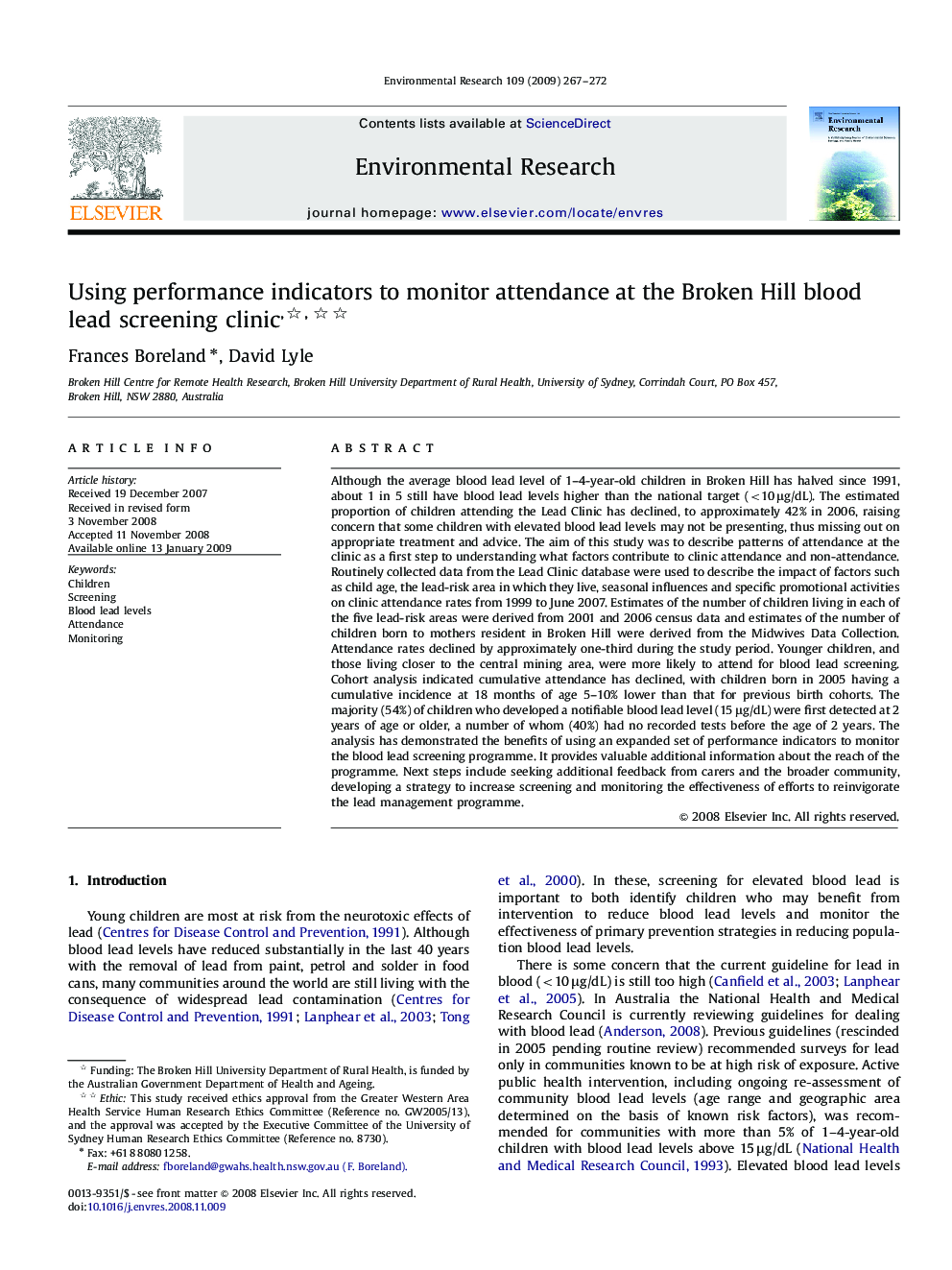| کد مقاله | کد نشریه | سال انتشار | مقاله انگلیسی | نسخه تمام متن |
|---|---|---|---|---|
| 4470716 | 1314442 | 2009 | 6 صفحه PDF | دانلود رایگان |

Although the average blood lead level of 1–4-year-old children in Broken Hill has halved since 1991, about 1 in 5 still have blood lead levels higher than the national target (<10 μg/dL). The estimated proportion of children attending the Lead Clinic has declined, to approximately 42% in 2006, raising concern that some children with elevated blood lead levels may not be presenting, thus missing out on appropriate treatment and advice. The aim of this study was to describe patterns of attendance at the clinic as a first step to understanding what factors contribute to clinic attendance and non-attendance. Routinely collected data from the Lead Clinic database were used to describe the impact of factors such as child age, the lead-risk area in which they live, seasonal influences and specific promotional activities on clinic attendance rates from 1999 to June 2007. Estimates of the number of children living in each of the five lead-risk areas were derived from 2001 and 2006 census data and estimates of the number of children born to mothers resident in Broken Hill were derived from the Midwives Data Collection. Attendance rates declined by approximately one-third during the study period. Younger children, and those living closer to the central mining area, were more likely to attend for blood lead screening. Cohort analysis indicated cumulative attendance has declined, with children born in 2005 having a cumulative incidence at 18 months of age 5–10% lower than that for previous birth cohorts. The majority (54%) of children who developed a notifiable blood lead level (15 μg/dL) were first detected at 2 years of age or older, a number of whom (40%) had no recorded tests before the age of 2 years. The analysis has demonstrated the benefits of using an expanded set of performance indicators to monitor the blood lead screening programme. It provides valuable additional information about the reach of the programme. Next steps include seeking additional feedback from carers and the broader community, developing a strategy to increase screening and monitoring the effectiveness of efforts to reinvigorate the lead management programme.
Journal: Environmental Research - Volume 109, Issue 3, April 2009, Pages 267–272